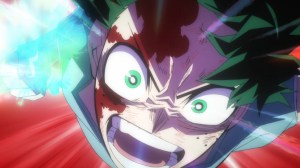
Deadshot is dead. The solicit and cover for Suicide Squad #9 made that clear several months ago, and the actual arrival of the issue fulfills that promise—there is no apparent fake out in these pages, at least not in regards to the demise of Floyd Lawton. Even as someone who has loved the character since discovering him in quarter-bin Suicide Squad back issues almost two decades ago, this issue earns the “shock value” surrounding a death in superhero comics. What happens in these pages reads as a faithful commitment to both the series’ ongoing story and the character who serves as its centerpiece: a man haunted by a lifetime of bad decisions and violence believing he deserves only death, but still tied to his life by a few precious threads.
Videos by ComicBook.com
In order to appreciate the framing of this climactic moment, it’s essential to understand the work Tom Taylor, Bruno Redondo, and others having been doing in this volume of Suicide Squad—the best iteration of the series since John Ostrander and Kim Yale wrote it so long ago. It has been a critical examination of the United States’ role in the world and how often powerful systems oppress people, domestic and foreign, with no concern for human life. Task Force X and the freshly recruited Revolutionaries have come to realize their interests are aligned as a result, individuals deemed as criminals and terrorists left as the only people able to identify the true enemies of a just society. It’s that clarity which also leads directly to Deadshot’s death.
The opening of Suicide Squad #9 reads perfectly as a superhero climax. Each member of the expansive team has something to do, and Redondo stacks panels to create an explosive effect—listen to “Calm Like a Bomb” as they invade the island nation of Anshea and climb Ted Kord’s tower to confront the villain. It’s a superb sequence that sets up the issue’s anti-climax perfectly.
After executing a seemingly perfect mission—never a good sign in a Suicide Squad comic—the team discovers Ted Kord, the architect of their collective woe, captured by Superman. This moment is not a simple reversal of expectations, but a clarification of the series’ central conflict: existing systems of power versus those who seek to change them. Superman is a representative of the status quo and his argument with Osita, along with what follows, makes it clear that even the clearest ideals and norms are only as useful as those who are willing to act on their behalf. The promised punishment of billionaire Ted Kord is about as effective as any American who lived through the financial crisis and its aftermath might expect.
So when the team of dispossessed freedom fighters are told that everything will be okay and that they should let the system do its work, it’s no surprise that things go horribly awry. Superman’s appearance is shown to be a hollow shell and the dream of a felon seeking to care for his family and live a peaceful life is the same. It’s a tragedy and a purposeful one—a moment that exposes Floyd Lawton’s initial despair as clearsightedness. The final few moments are horrible as the tension mounts and the promised final moment draws nearer. There’s no avoiding the horror show as the house appears to win once again, but that story needs telling, too.
Suicide Squad #9 offers an appropriate climax for the series as it prepares to end. Even when revealed months in advance, this twist still resonates because it builds upon themes and character work the story has engaged with from its very start. Every aspect of this death is earned and emphasizes what this iteration of Suicide Squad is all about. It is a stunning issue filled with action and a wide-array of tonal beats, but it all traces the same essential questions and doesn’t hesitate to answer them in its final few pages. Few moments in superhero comics—a genre filled with resurrections and cash grabs—earn the gravitas they project. This one does.
Floyd Lawton does not find a good death. There is no glory or pride to be found in his falling corpse, only sadness and missed opportunities. It’s not a good ending, but it is a real one.
Rating: 5 out of 5
Published by DC Comics
On September 22, 2020
Written by Tom Taylor
Art by Bruno Redondo
Colors by Adriano Lucas
Letters by Wes Abbott
Cover by Bruno Redondo








